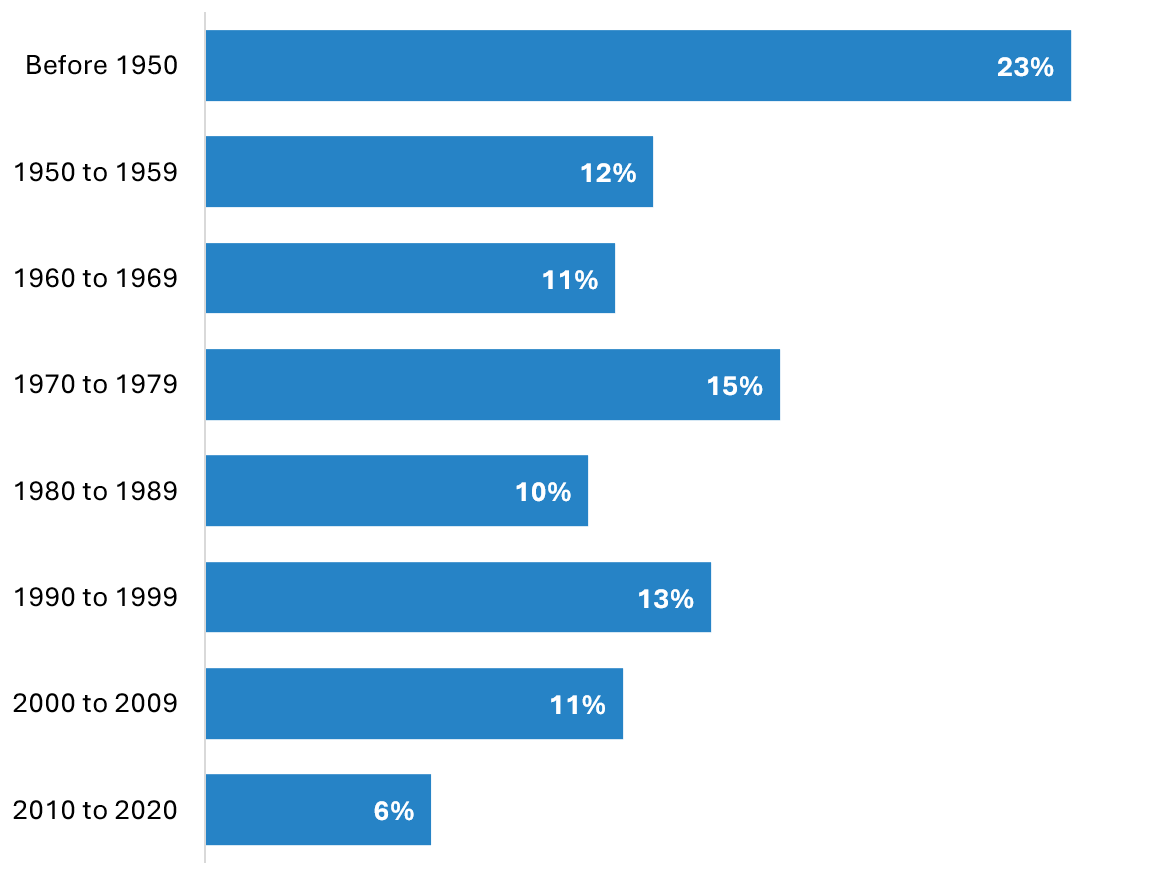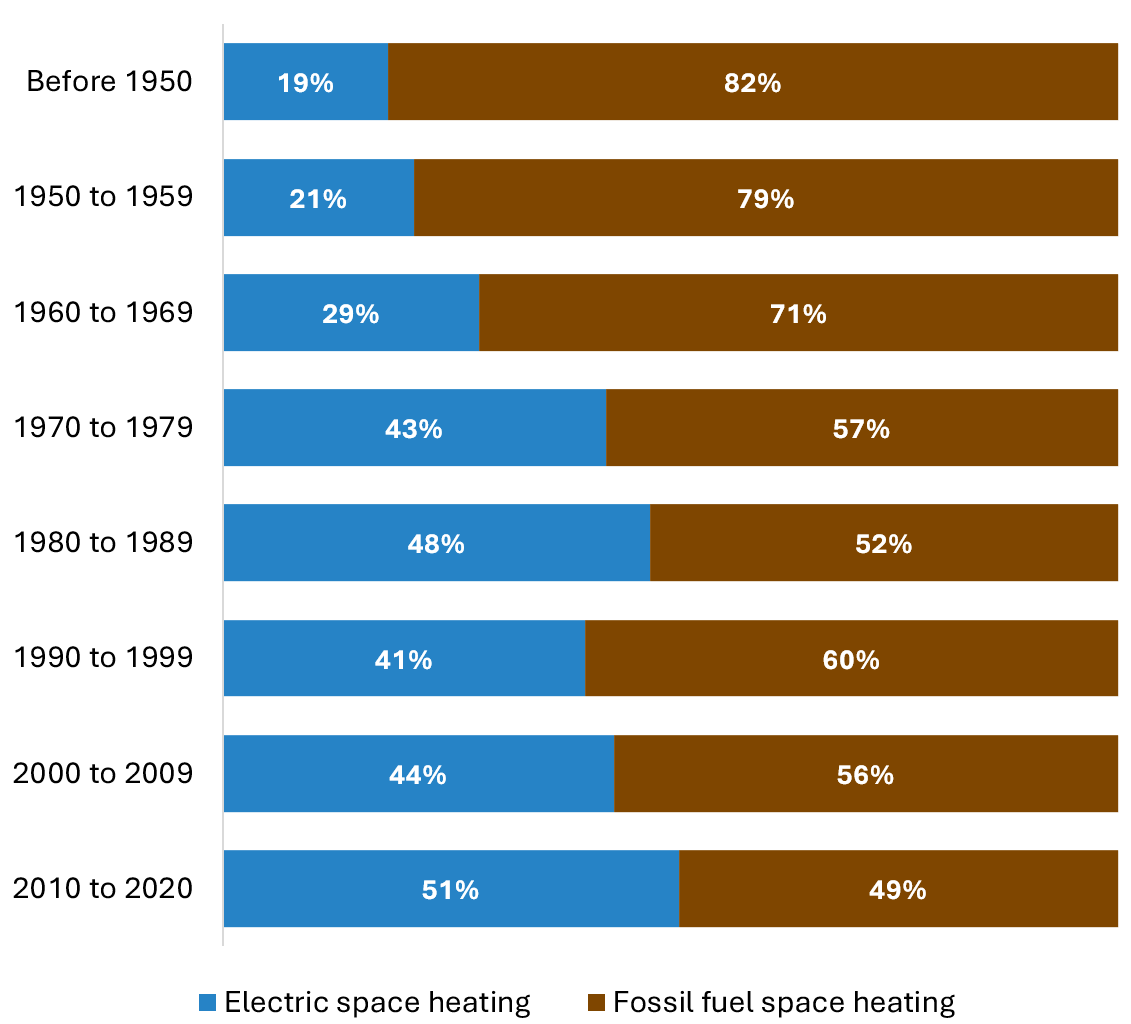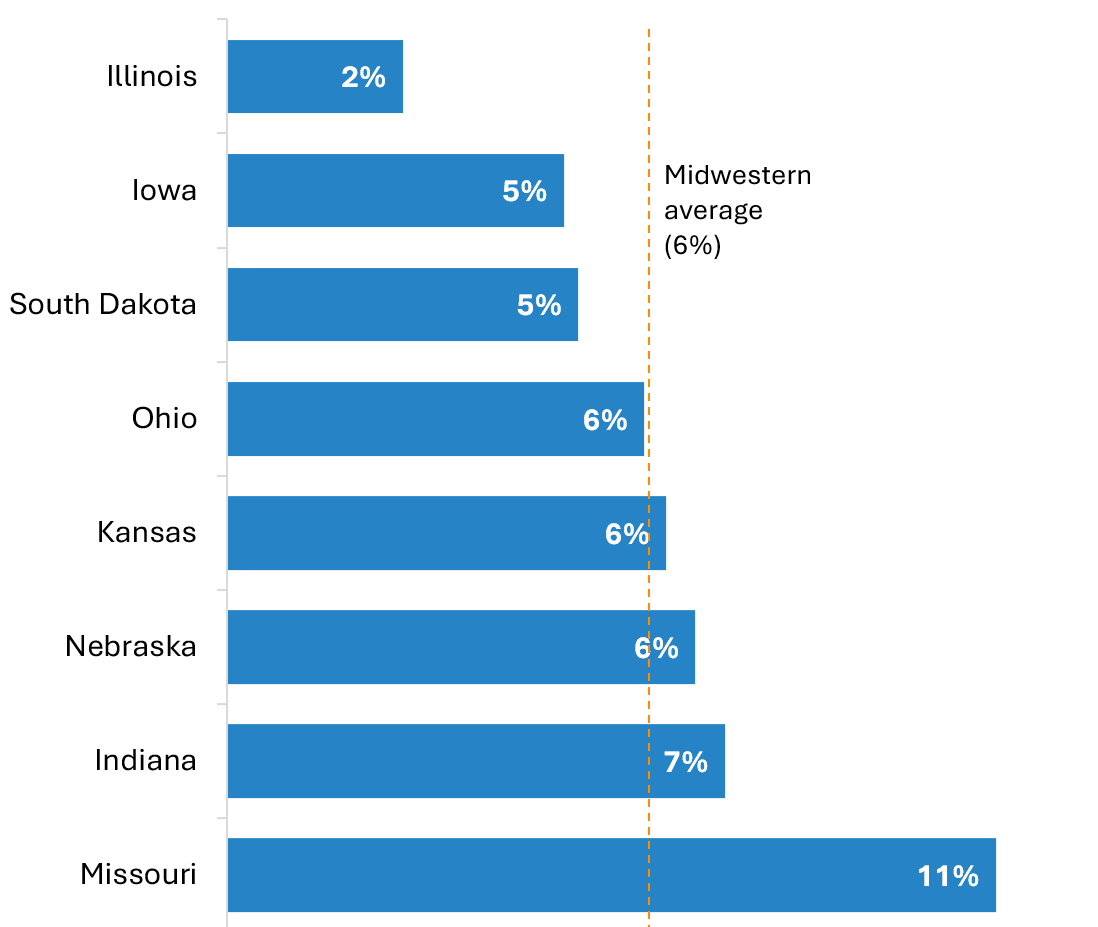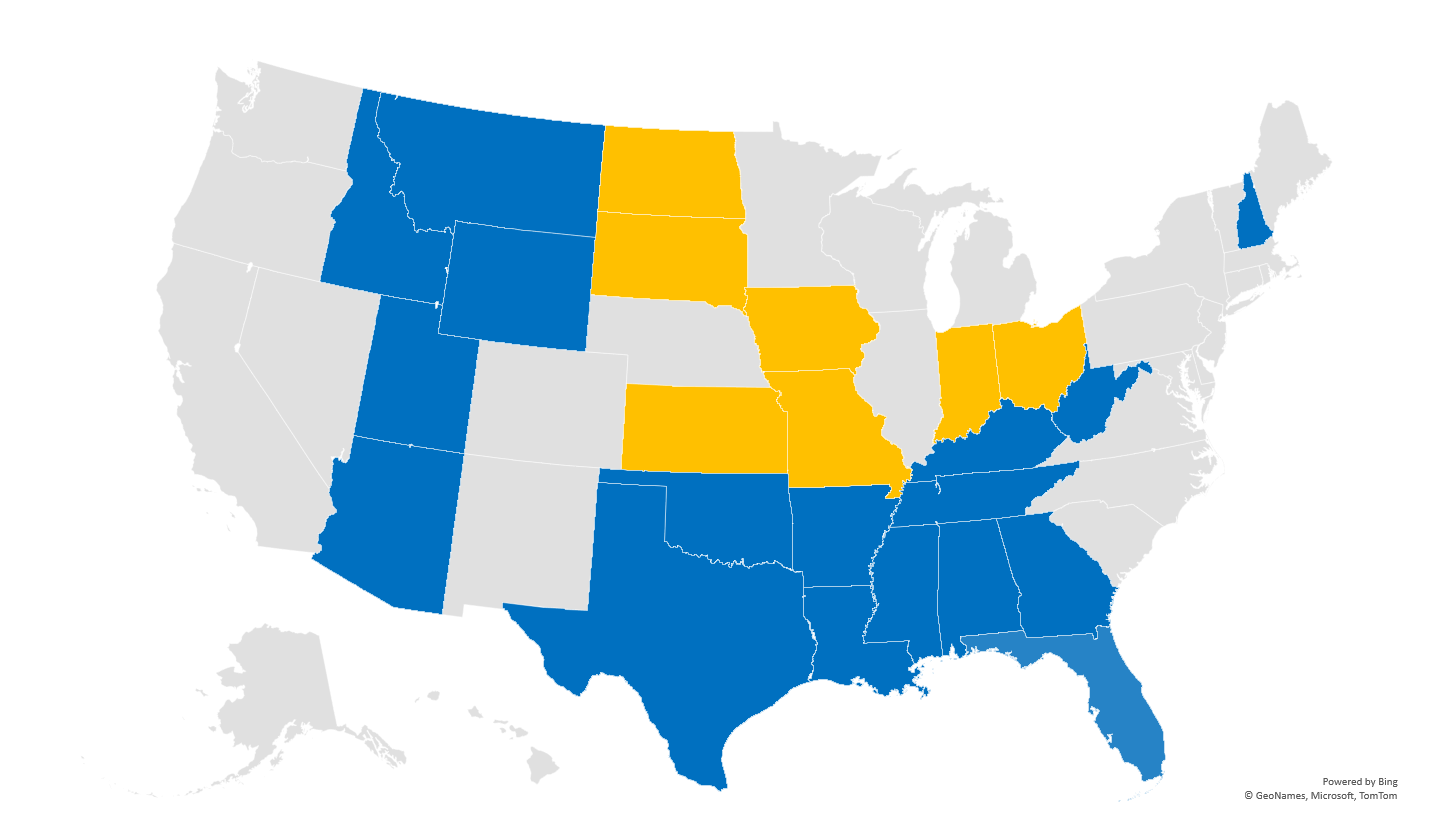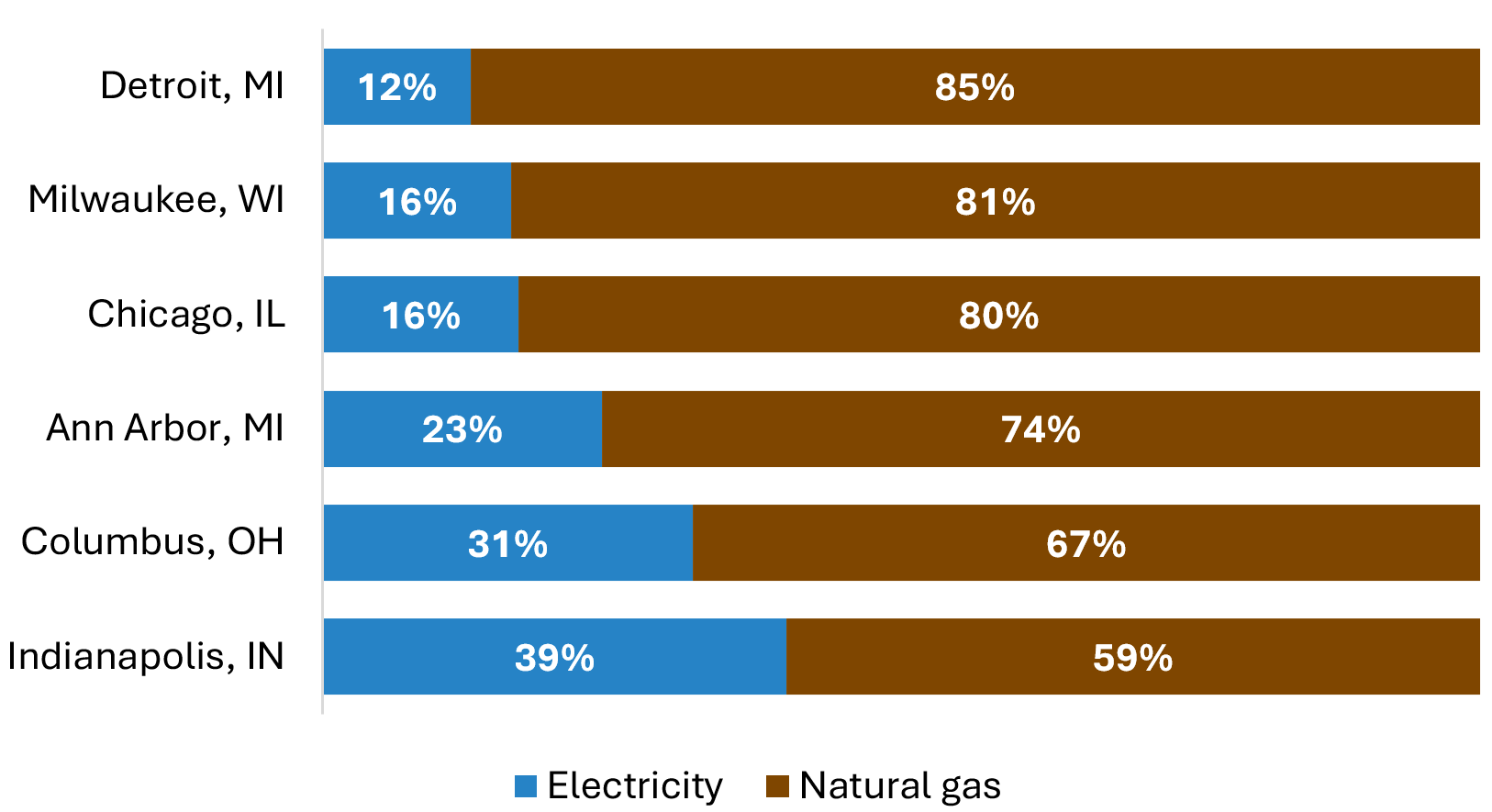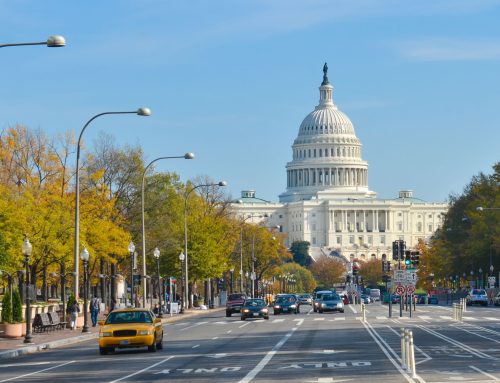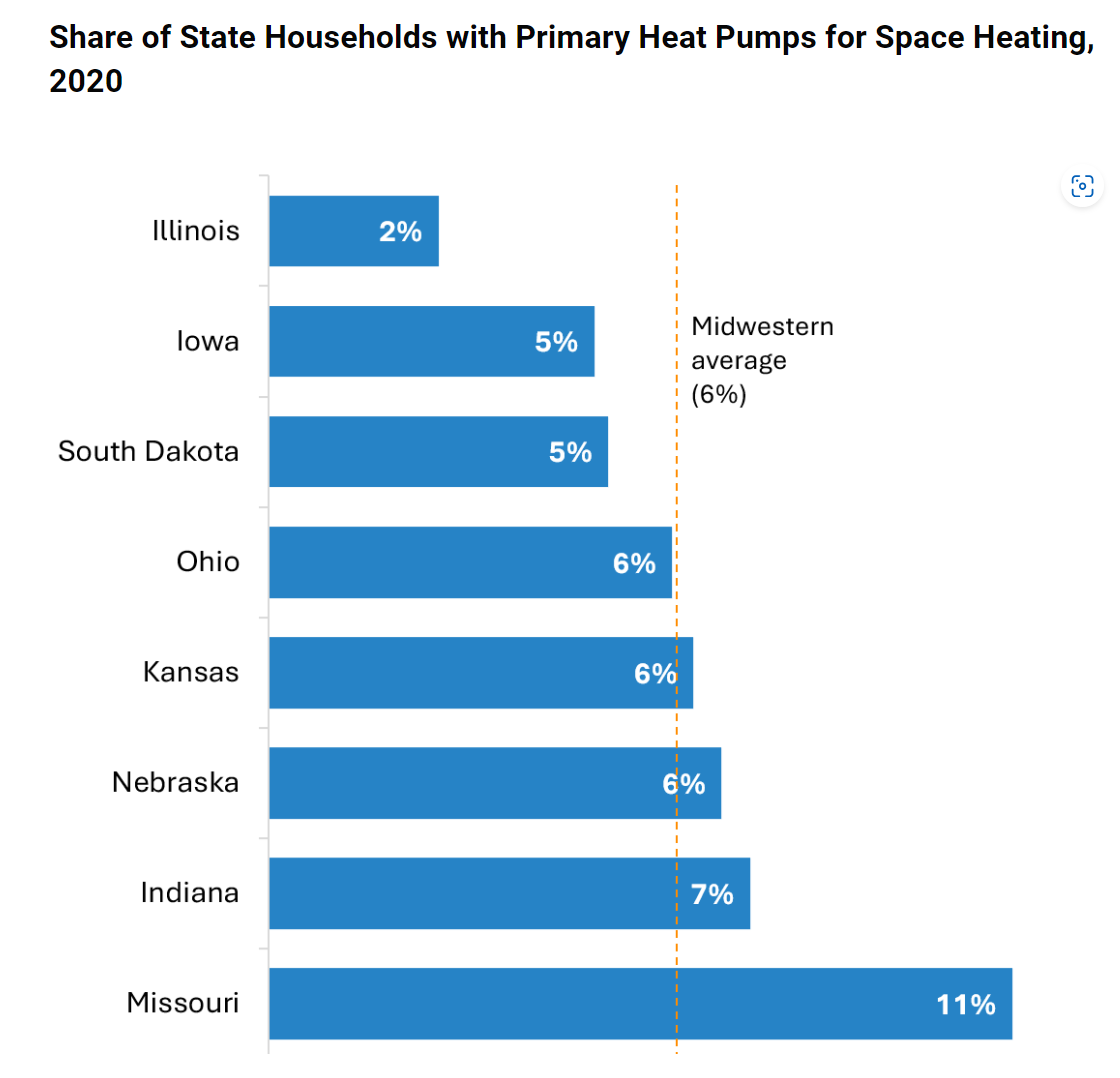
As the most gas- and propane-dependent region in the country, the Midwest is a national laggard when it comes to building electrification and heat pump adoption. However, new developments in both local and state building electrification policy as well as technology advancements are giving way to positive change that could move the needle across the region.
As defined by the U.S. Department of Energy, and for the purposes of this article, the Midwest consists of twelve states: Illinois, Indiana, Iowa, Kansas, Michigan, Minnesota, Missouri, Nebraska, North Dakota, Ohio, South Dakota, and Wisconsin. What does the Midwest housing stock look like and how does the policy landscape support or impede progress on energy efficiency and electrification?
An aging, fossil fuel-dependent housing stock
Figure 1: Share of Total Midwestern Housing Units by Decade Constructed, 1950-2020
Source: Atlas Buildings Hub, Residential Building Characteristics Dashboard, 2020
Over 60 percent of Midwestern housing units were built before 1980, and as such residential buildings across the region tend to be less energy efficient (Figure 1). An older building stock also means housing units were more likely to be built to an outdated code and tend to be equipped with aging HVAC infrastructure. In fact, across nearly every state in the region, more than one-third of households reported HVAC equipment of 15 years or older. According to the American Council for an Energy-Efficient Economy (ACEEE), older buildings in cold climates like the Midwest will benefit most from envelope and insulation-related upgrades. Likewise, insufficient weatherization also tends to drive up household energy consumption, requiring higher fuel volumes and resulting in higher heating costs.
Figure 2: Primary Space Heating Fuel Used in Midwestern Households by Decade Constructed (2020)
Source: Atlas Buildings Hub, Residential Building Characteristics Dashboard, 2020
As seen in Figure 2, Midwestern households constructed before 1970 are much more likely to utilize fossil fuels for primary space heating. While we do see growth in the relative number of new builds constructed with electric heating over the past 10 years, nearly half of new units were still built with fossil heating between 2010 and 2020. Retrofitting buildings with heat pumps, heat pump water heaters, and other electric appliances is an expensive process, which may deter the many Midwesterners living in older units from making efficiency upgrades.
Overall, the EIA explained that in 2020, Midwestern households consumed 34 percent more natural gas for space and water heating than the national average. But that trend varies based on when those housing units were constructed: those built over the past decade consumed 14 percent less natural gas than the average U.S. household, while those built before 1950 (¼ of all regional housing) consumed 32 percent more.
A combination of factors — an older, less energy efficient building stock, a dependence on gas infrastructure, and a cold climate — drive high levels of fossil fuel consumption in Midwestern residential buildings relative to the nation writ large.
Midwestern fuel mix by end use
Figure 3: Fuel Mix by End Use in Midwestern Households, 2020
Source: Atlas Buildings Hub, Residential Building Characteristics Dashboard, 2020. Households without ranges may have a separate, secondary cooktop whose fuel is not classified in the cooktop fuel mix.
The Midwest is the region most dependent on piped gas for home heating, with 70 percent of households burning methane to stay warm. In fact, Illinois (78 percent) and Michigan (77 percent) are the second- and third-most gas dependent states in the country, surpassed only by Utah (86 percent). Likewise, only 19 percent of Midwestern households reported electricity as the primary space heating fuel; the region significantly trails the U.S. average (34 percent) and lags the national leader, the South, by 36 percentage points.
In addition, the Midwest is the region most reliant on propane for space heating, with a rate of household dependency (8 percent) twice the national average. In states like Minnesota, the Dakotas, and Iowa, around 15 percent of households rely on propane for primary heating, nearly four times the national average. And looking at total households by state, Ohio (342,000), Michigan (333,000), and Minnesota (324,000) are home to the greatest numbers of propane-dependent households in the entire country.
Beyond space heating, the Midwest water heating mix is dominated by piped gas (60 percent), with only 36 percent of households reporting electricity as primary water heating fuel. With regard to the electrification of residential water heating, the Midwest trails the South by over 30 percentage points and lags the national average by 10. However, as a bright spot on the regional electrification scorecard, more than half of Midwest households (57 percent) report using electric stove tops, a rate on par with the national average (59 percent) and above those seen in the Northeast (45 percent) and the West (44 percent).
What about heat pump adoption?
Figure 4: Share of State Households with Primary Heat Pumps for Space Heating, 2020
Source: Atlas Buildings Hub, Residential Building Characteristics Dashboard, 2020
Data from Michigan, Minnesota, North Dakota, and Wisconsin have been withheld from the figure and Midwestern average due to a small sample size of respondents in the survey.
In tune with the region’s high dependence on fossil fuels for residential space heating (78 percent of households), the Midwest also lags the national average in terms of heat pump adoption (Figure 5). In every Midwestern state save Missouri, fewer than 10 percent of households report using a heat pump for primary space heating, with a regional average of just five percent. For reference, heat pump data from Michigan, Minnesota, North Dakota, South Dakota, and Wisconsin have been withheld from the heat pump analysis due to small sample size respondents in the survey. Despite a low rate of heat pump adoption to date, advancements in heat pump technology, especially those designed to operate in cold climates, serve as an opportunity for increased market penetration.
Cue cold-climate heat pumps
Messaging against heat pump adoption in the Midwest often alleges that the technology cannot perform well in cold climates. However, cold-climate heat pump technology has made significant advancements, with units operating effectively at 5F, and in many cases, at temperatures as low as -13F. Likewise, new low-boiling point refrigerants and variable speed compressors will further help to maximize the reliability and efficiency of this technology.
Certain cold climate locales have witnessed rapid success with heat pump adoption in recent years, with Maine surpassing its goal of 100,000 total installs this summer two years ahead of schedule. Even in places as frigid as Michigan’s Upper Peninsula and Alaska, cold climate heat pumps are seeing uptake. The evidence demonstrates that heat pumps designed for cold climates can in fact perform very well, representing an important electrification opportunity for the Midwest.
Decarbonization policy across the Midwest
To advance building decarbonization, strong public policy from state and local governments across the region will be essential. While lawmakers in places like Minnesota and Oak Park, Illinois have pushed ahead with supportive initiatives, other jurisdictions have enacted policies that will delay and impede meaningful progress.
For example, statewide bans on local electrification mandates, known as preemption laws, have been enacted in seven out of twelve Midwestern states (Figure 3). These state laws prohibit counties and municipalities from requiring all-electric new construction or halting new gas hookups.
For example, Iowa’s preemption law, passed in April 2021, prohibits localities from regulating natural gas and propane sales. Ohio’s law, enacted in September 2021, blocks localities from curtailing natural gas service or prohibiting new gas hookups, and does away with local stretch codes — a building code more aggressive or expansive than the base state code. Beyond local preemption, the Ohio legislature gutted the state’s utility energy efficiency rebate programs in 2019 as part of the now infamous House Bill 6.
Figure 5: States with Preemption Laws, 2023
Source: S&P Global, June 2022 and Atlas Buildings Hub | States with preemption policies in blue, Midwestern states with preemption policies in yellow.
However, other jurisdictions are leading the region, and in some cases, the nation, on building decarbonization. The ACEEE consistently ranks Illinois, Michigan, and Minnesota relatively high on their annual state energy efficiency policy and program scorecards. In 2022, Minnesota ranked 10th, Michigan 15th, and Illinois 16th.
Minnesota has emerged as leader in Midwestern building electrification, and a slim, newfound Democratic majority in the state legislature has acted swiftly to advance building decarbonization policies and appropriate funds for incentive and loan programs. This year, the Minnesota state budget contained historic support for clean energy and climate funding, with around $300 million earmarked for energy efficiency, home health, and electrification programs according to Buildings Hub.
With this funding, the state will develop a suite of new programs, including a heat pump rebate program, pre-weatherization and workforce training grants, electric panel upgrade grants, solar community gardens, and a residential resilience grant program. In addition, the state has created a $156 million “Competitiveness Fund” to help relevant entities in the state apply for and receive cost-match funds for federal programs.
Michigan is not far behind. The budget crafted by the state legislature for fiscal year 2024 contains over $200 million for energy efficiency rebates and $25 million for weatherization programs. This funding will go a long way to help policymakers meet the statewide goal of achieving economy-wide carbon neutrality by 2050, a goal enshrined in the 2022 Michigan Healthy Climate Plan. And with Democrats now in control of every branch of state government, policymakers in the Michigan legislature have a historic opportunity to pass more assertive clean buildings policy.
Local actors take charge
On the local level, Ann Arbor, Michigan has committed to achieving “a just and equitable” path to net-zero emission by 2030, one of the most ambitious climate goals anywhere on the planet according to Dr. Missy Stults on Buildings Hub Live. To achieve that goal on its tight timeframe, the city is deploying multiple strategies and programs, including a green rental housing initiative, a home energy advisory service, and energy and water benchmarking disclosure requirements. Taking a bold approach, the city is partnering with the University of Michigan on a retrofit project to realize the nation’s first carbon-neutral existing neighborhood, with a priority goal of reducing energy burden for those facing the highest energy costs.
Also in Michigan, local officials in Traverse City adopted an extensive building electrification policy in 2016 mandating new public buildings be all-electric, alongside a goal of meeting all public buildings’ operational energy demand with renewable energy. This year, local officials renewed their commitment to that goal with a zero-emissions buildings requirement for all new city buildings (and renovations).
Over in Indiana, Ball State University operates its own thermal energy network, reportedly the largest ground-source, closed-loop district geothermal energy system in the country, which has halved the campus’ carbon emissions since it was installed in 2012. Across another campus, Indiana University announced in September 2023 a system-wide voluntary plan to reach net zero by 2040.
As the largest city in the region, Chicago’s actions have an outsized impact. The Windy City has adopted the 2021 IECC building codes and is considering applying the Illinois stretch energy code in 2024. In 2022, Mayor Lori Lightfoot’s administration deployed close to $200 million in various climate projects, including building decarbonization initiatives. And this August, the city government committed to disbursing $15 million to support the adoption of heat pumps and induction stoves in low-income households. Also in Illinois, this June, the village of Oak Park became the first Midwestern municipality to enact an electrification mandate for new buildings, notwithstanding the Berkeley ruling.
Figure 6: Home Heating Fuel Mix in Selected Midwestern Cities, Natural Gas vs. Electricity (2021)
Source: Atlas Buildings Hub, Demographics, 2021
The five largest cities in the Midwest — Chicago, Columbus, Indianapolis, Milwaukee, and Detroit — vary in their home heating fuel mix, with some more electrified than others. (Figure 6). Columbus and Indianapolis have a higher share of households using electric space heating than the regional average (19 percent). In fact, Indianapolis stands as one of the most electrified cities in the Midwest, with 39 percent of municipal households reporting electricity as their primary space heating fuel. Lastly, Ann Arbor, with 23 percent of households reporting electric space heating, has some work to do if it intends to achieve economy-wide carbon neutrality by 2030.
Political will for large-scale building electrification is mixed in the Midwest. However, federal programs are slated to inject record funding into state and local electrification efforts, starting with the Home Electrification Rebate Programs. While the region generally lags the rest of the country, state champions like Michigan and Minnesota as well as exemplary cities like Oak Park, and Ann Arbor, are setting an important precedent for the movement to grow.

